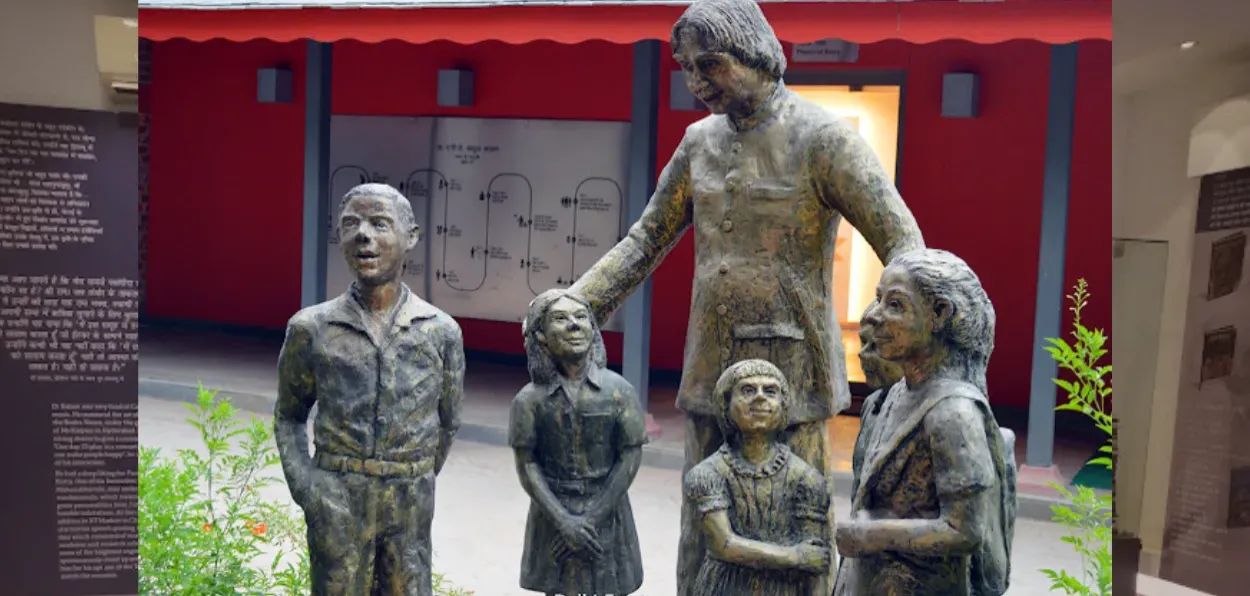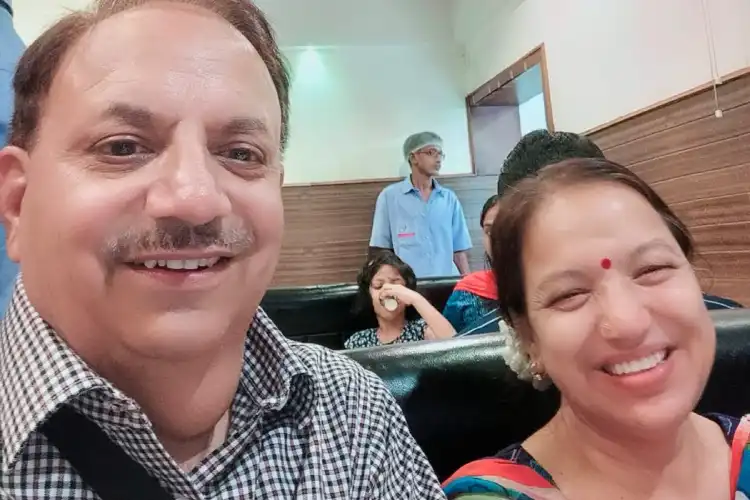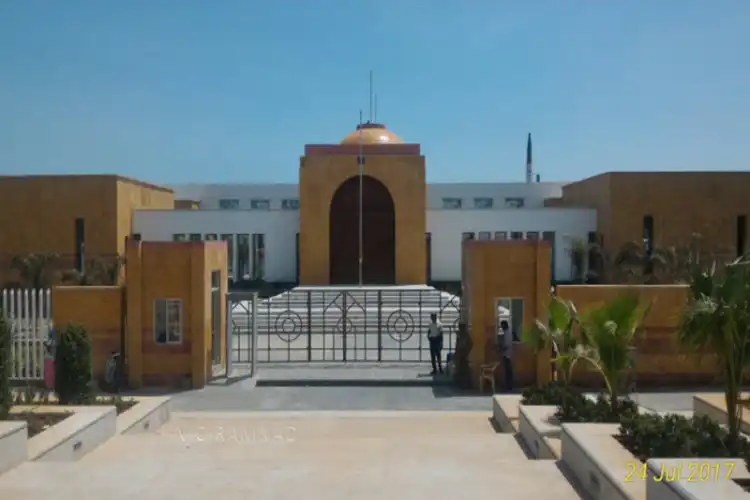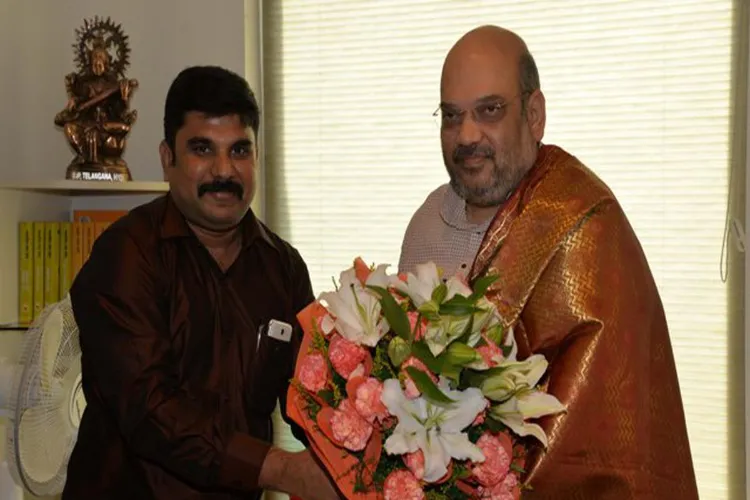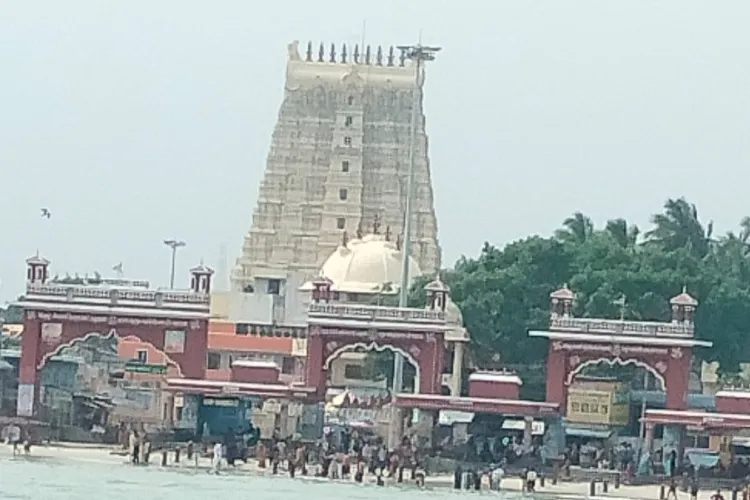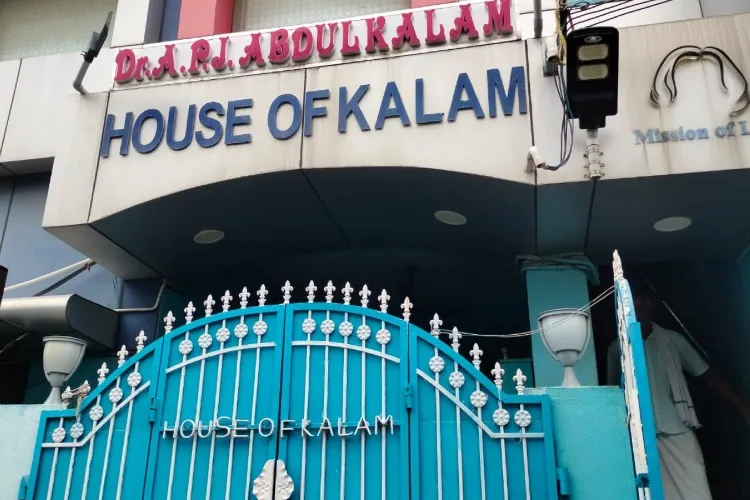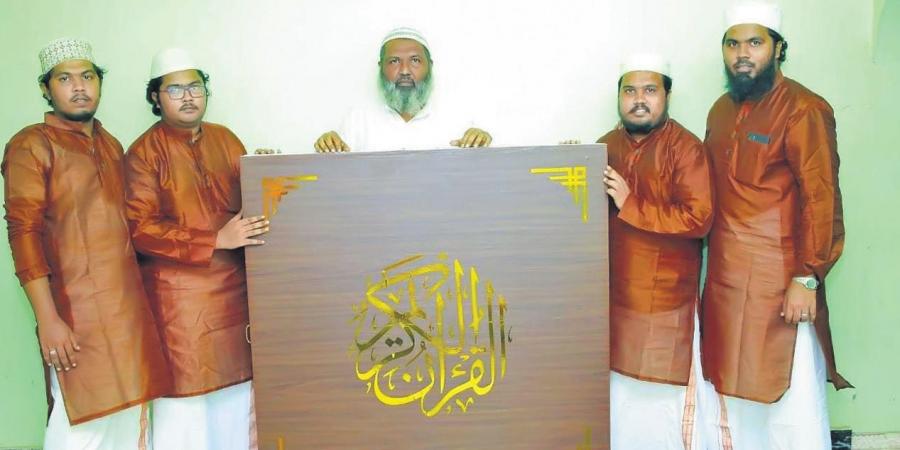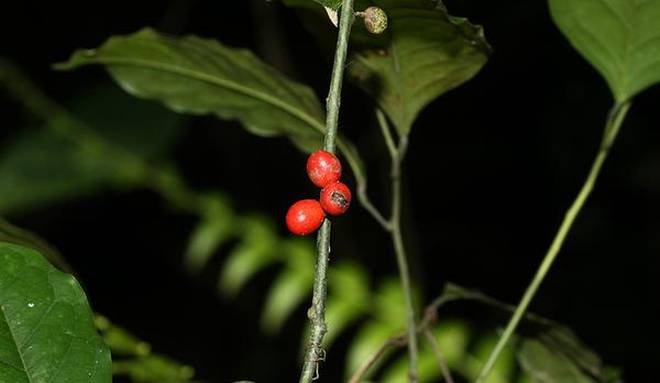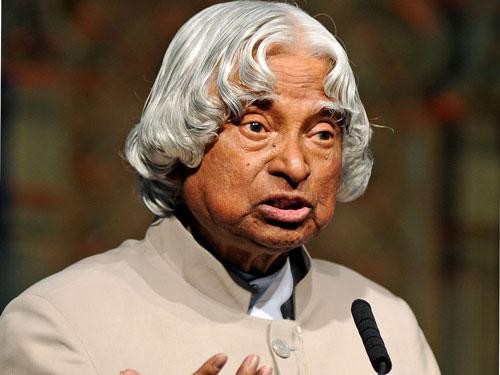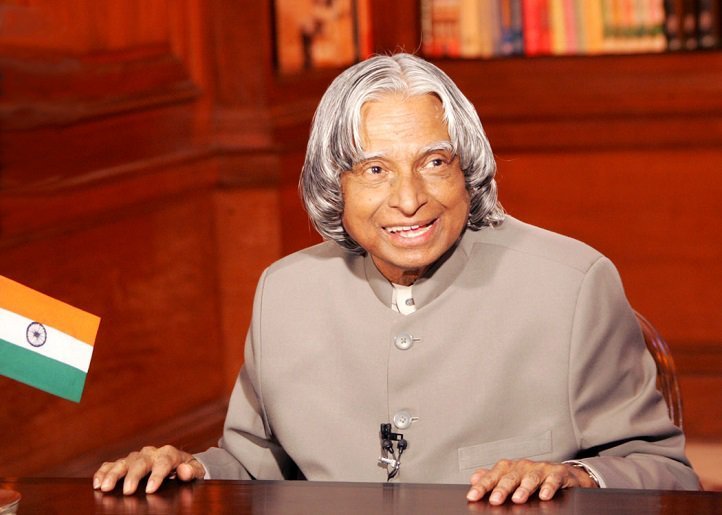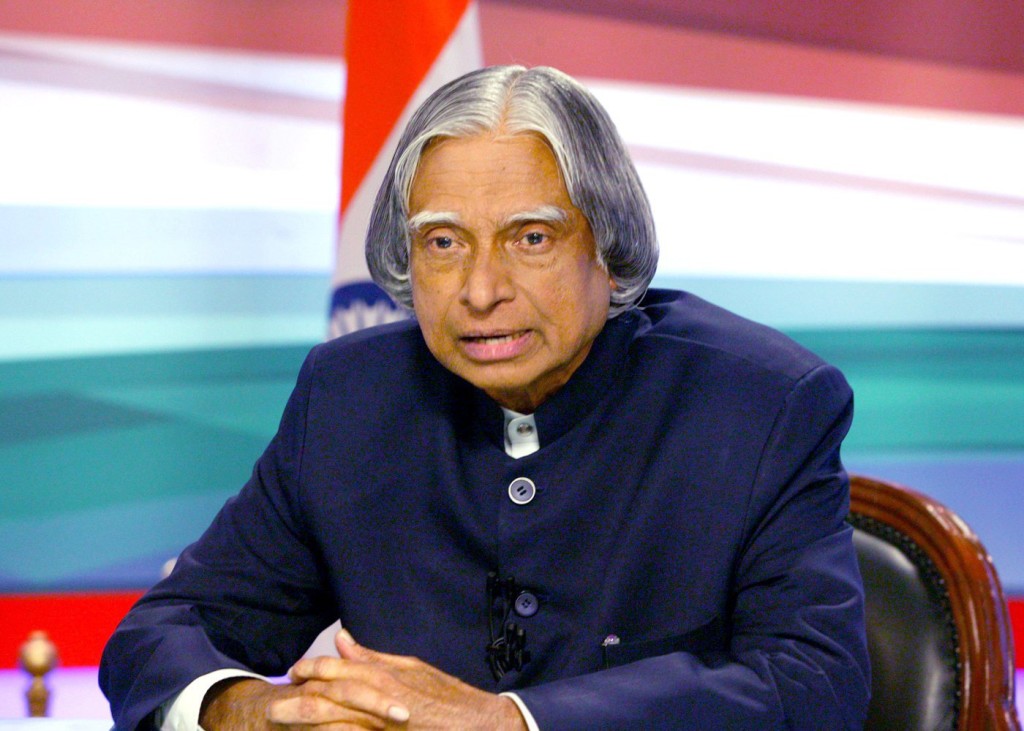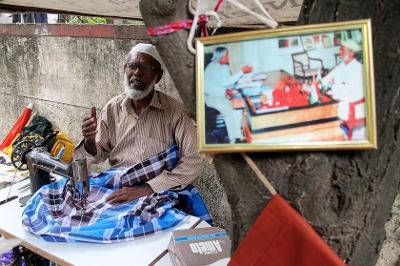Faizabad / Lucknow, UTTAR PRADESH :
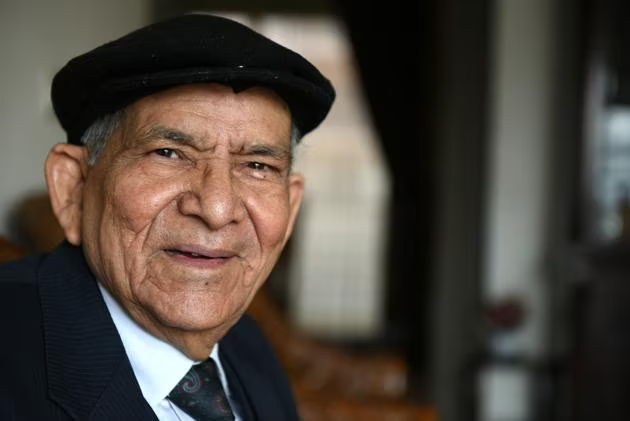
Justice S H A Raza (Dheeraj Dhawan)
It’s said you get one life to live it all. Believing this completely justice Syed Haider Abbas Raza (retd) has lived his life to the brim and accomplished all that he once dreamt of.
At 81, he continues to walk daily, come hail or high water, is an avid television watcher and also actively counsels young lawyers if and when they seek his guidance. Television-viewing though is strictly restricted to political programmes.
It is not often that you see an octogenarian look dapper in a dark-coloured, three-piece suit and matching tie. Raza carried it off with aplomb, the attire also demonstrating the formality that came with his chosen profession.
Early days
“I was born on December 7, 1939, in Faizabad and we are from the family of Kichouchha Sharif, a known Dargah of the famous Chisti Sufi saint Makhdoom Syed Ashraf Jahangir Semnani.
My father, Mehdi Hasan, was a postmaster and education was the most important trait of my family and all six siblings were given the best education available in those times. We were told to focus on studies and rest will follow. Till Class VIII, I studied in Faizabad and then my father decided to settle in Lucknow as he too had received his early education here and also, he liked the city more than any other place. It was in Lucknow that I was enrolled in Government Jubilee Inter College and I began my new innings in a new town,” Raza reminisced fondly.
Part of students’ movement
“I was in Class IX when I took part in a number of debate competitions and won a number of contests. It was then that I met a lot of new people and also developed public speaking skills. The early 50s gave my life a new turn as it was during these years I also got associated with the students’ movement. In 1952, I became the general secretary of the association known as Self Governing Consulate of Jubilee College and thereafter, I joined the Students’ Federation of India and remained an active member of the communist party. Soon, these movements become an essential part of my life when I enrolled in Lucknow University in 1956,” he said.
Finding his calling
Talking about his days of youth, he said, “Those were the days when I learnt how important it is for all to understand his or her rights and to fight for them too. When you are young the energy is different, the understanding of situations is so different than what the reality is. And when you meet people who have been deprived of their rights, it hurt me more. Thankfully, I was studying law and got to learn a lot during that phase. I had a dream to make a career either in politics or in judiciary and I got to live the best of both worlds but soon realised my calling was law practice.”
A lawyer is born
“After graduating as Bachelor of Arts and Law, I joined the Bar in 1962. And I specialised in Service Labour, Civil and Constitutional law. Also, it was in that same decade I joined the Congress and became general secretary and president of Congress committee, Lucknow. Also because of my specialisation, I got associated with various trade unions and got actively involved in meetings, rallies, demonstrations and repressive policies of the then Janta Party government.”
It was in the late 70s he started taking up legal cases associated with the political party, “Yes, I appeared as a lawyer in cases against the late Sanjay Gandhi, leader of Congress Party, launched in Lucknow court. Also, I appeared as a lawyer before Aligarh Enquiry Commission to defend former Prime Minister Indira Gandhi. I was completely involved with my political stint and took part in party tours and meetings. Then when Indiraji came to power, I decided to quit active politics and concentrate on my legal practice more in Lucknow Bench of the Allahabad High court.”
Elevation as judge
“My elevation as judge did not happen overnight. Once my name did go for the process in 1978-79 but the then chief minister succumbed to the pressure from people who did not want my name to go ahead. And again after almost a decade the then chief justice Amitabh Banerjee considered my name and did send it forward and recommended my name to the high court after seeing the kind of law practice I was undertaking at that time. Then finally, I was elevated in the year 1988-89 and become judge of the Lucknow Bench of the Allahabad High Court. During the same time, I was nominated by the Governor as an executive council member of the Aligarh Muslim University.
My tenure as judge was of 13 years in conservative estimate and I disposed of about one lakh cases. Also, I still feel proud that my judgements in Service Labour, Civil and Constitutional matters were acclaimed by the Supreme Court. It was in 2001 that I retired as senior judge of the Lucknow Bench of the Allahabad High Court.”
Talking about the cases he presided over, he said, “As we all know, India’s judicial system allows any individual or group of people to initiate litigation by merely addressing a letter to a judge that is called a PIL (public interest litigation) and in my career, I tried taking them to the highest peak. In the ‘Jhande wala Park, Aminabad PIL’, I stopped the construction of a shopping complex there as the park had historical significance: it would all have got destroyed. Then political rallies at Begum Hazrat Mahal Park used to create chaos in Hazratganj. I presided over the hearing on that PIL too and stopped the organisation of such rallies there. Also, the old clothes’ market around that place was relocated after that. Also, Hazratganj and six other linked roads were made no-diesel tempo zoned after I pronounced a judgement over another PIL in that matter.”
These judgements earned him a lot of praise. “Yes, this came as a surprise that people actually did come up to me lauding those judgements. And till date, they remain most talked about cases in the state’s judicial history.”
First Lokayukta
After retirement too, justice Raza refused to slow down. “It was in September 2001, the governor of Uttarakhand along with the then chief minister, chief justice and leader of opposition, appointed me the first Lokayukta of Uttarakhand. It was again a big honour for me and overwhelmed me. I also felt so proud and happy when I convened and organised the All India Lokpal, Lokayukta and UP Lokayukta Conference in Dehradun which was inaugurated by former president APJ Abdul Kalam and former prime minister Manmohan Singh. Later, in 2006-07, I was awarded ‘The Pride of Uttarakhand Award’ and ‘Uttarakhand Ratna,’ respectively.”
source: http://www.hindustantimes.com / Hindustan Times / Home / by S Farah Rizvi / January 20th, 2020
